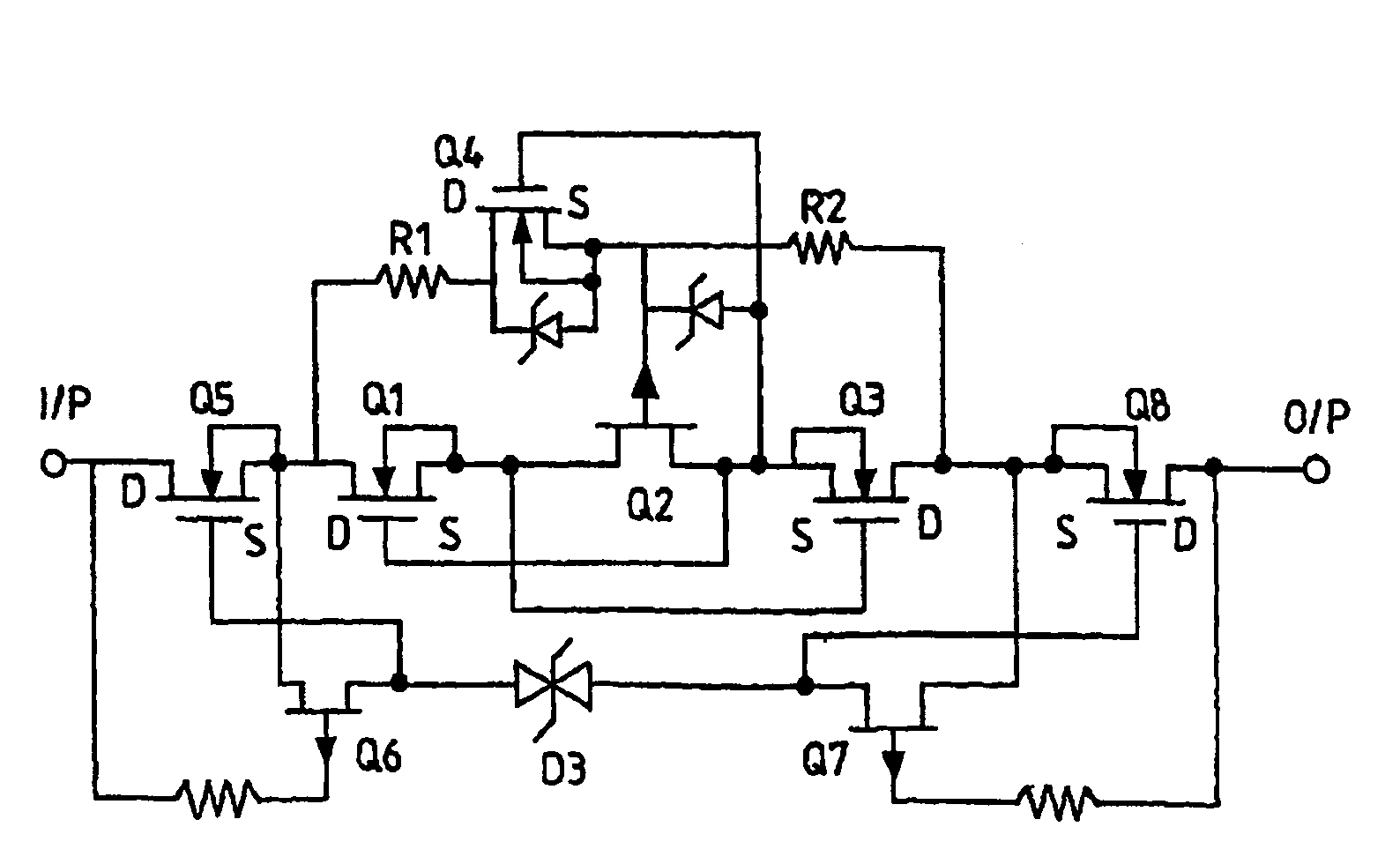Protection device
a protection device and protection device technology, applied in the direction of electronic switching, emergency protection arrangements for limiting excess voltage/current, pulse techniques, etc., can solve problems such as unsuitability for operation
- Summary
- Abstract
- Description
- Claims
- Application Information
AI Technical Summary
Benefits of technology
Problems solved by technology
Method used
Image
Examples
Embodiment Construction
[0018]FIG. 1 shows a TBU circuit suitable for bipolar operation. The depletion mode N channel MOSFETS Q10 and Q11 are in series with depletion mode P channel JFET Q12. With the input more positive than the output and where the input (or through) current is below a threshold current all three transistors Q10 to Q12 are conducting. When a current greater than the threshold current is applied through the TBU, MOSFET Q10 and JFET Q12 cease conducting for positive currents and MOSFET Q11 and JFET Q12 for negative currents and the input is isolated from the output. For the circuit to reset the input must return to zero or near zero. The commutating diodes of U.S. Pat. No. 5,742,463 may be eliminated when Q10 and Q11 are MOSFETs and Q12 is a JFET and a current source, which in its simplest form is a resistor, is used to connect the gate of Q12 to the drain of each of Q10 and Q11. In this figure, transistors Q10, Q12 and Q11 form a variable resistance circuit block and resistors R1 and R2 a...
PUM
 Login to View More
Login to View More Abstract
Description
Claims
Application Information
 Login to View More
Login to View More - R&D
- Intellectual Property
- Life Sciences
- Materials
- Tech Scout
- Unparalleled Data Quality
- Higher Quality Content
- 60% Fewer Hallucinations
Browse by: Latest US Patents, China's latest patents, Technical Efficacy Thesaurus, Application Domain, Technology Topic, Popular Technical Reports.
© 2025 PatSnap. All rights reserved.Legal|Privacy policy|Modern Slavery Act Transparency Statement|Sitemap|About US| Contact US: help@patsnap.com



